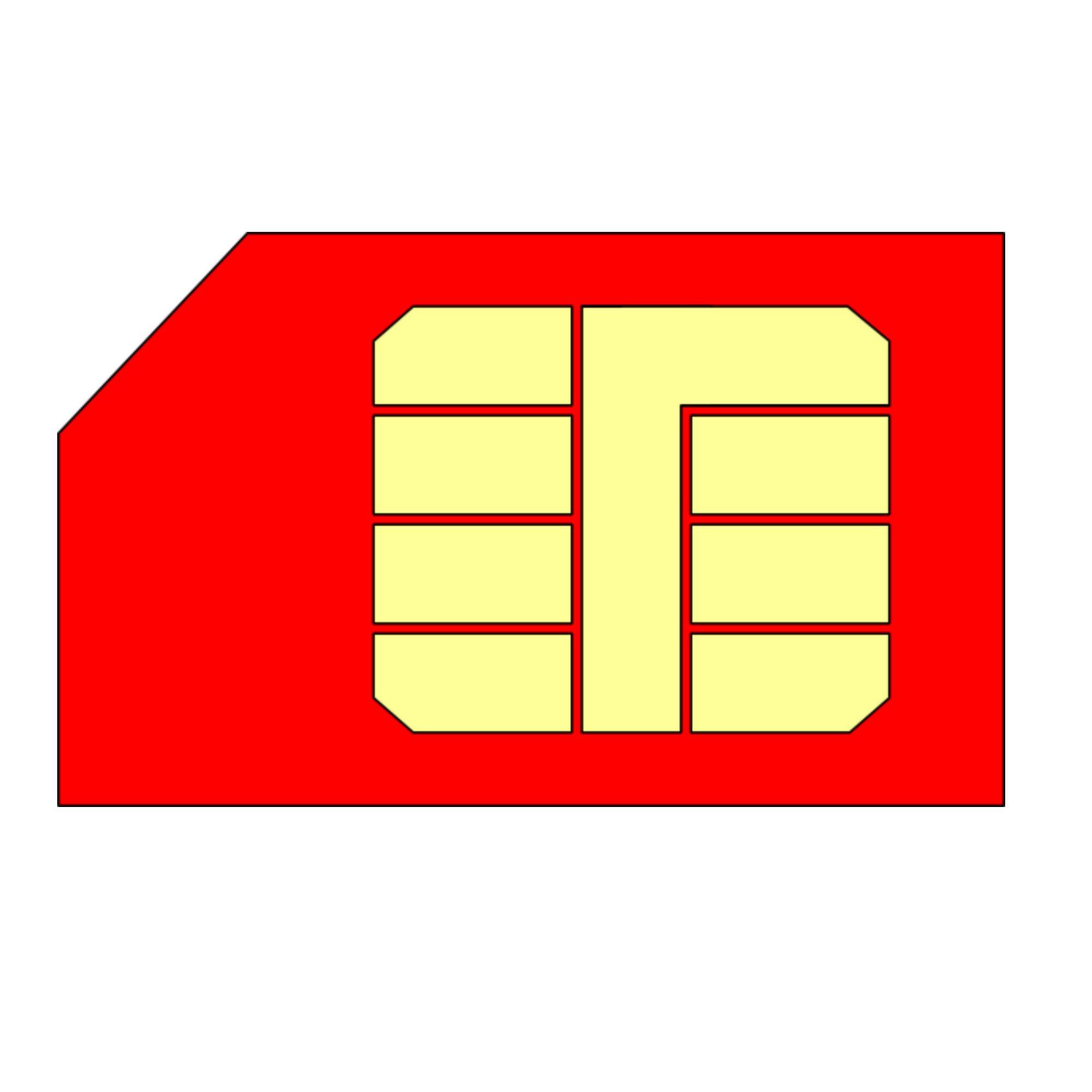
This image has format transparent PNG with resolution 2000x2000.
You can download this image in best resolution from this page and use it for design and web design.
Sim card PNG image with transparent background you can download for free, just click on download button.
A subscriber identity module or subscriber identification module (SIM), widely known as a SIM card, is an integrated circuit that is intended to securely store the international mobile subscriber identity (IMSI) number and its related key, which are used to identify and authenticate subscribers on mobile telephony devices (such as mobile phones and computers). It is also possible to store contact information on many SIM cards. SIM cards are always used on GSM phones; for CDMA phones, they are needed only for LTE-capable handsets. SIM cards can also be used in satellite phones, smart watches, computers, or cameras.
The SIM circuit is part of the function of a universal integrated circuit card (UICC) physical smart card, which is usually made of PVC with embedded contacts and semiconductors. SIM cards are transferable between different mobile devices. The first UICC smart cards were the size of credit and bank cards; sizes were reduced several times over the years, usually keeping electrical contacts the same, so that a larger card could be cut down to a smaller size.
A SIM card contains a unique serial number (ICCID), international mobile subscriber identity (IMSI) number, security authentication and ciphering information, temporary information related to the local network, a list of the services the user has access to, and two passwords: a personal identification number (PIN) for ordinary use, and a personal unblocking key (PUK) for PIN unlocking. In Europe, the serial SIM number (SSN) is also sometimes accompanied by an international article number (IAN) or a European article number (EAN) required when registering on line for the subscription of a prepaid cards.
The SIM card is a type of smart card, the basis for which is the silicon integrated circuit (IC) chip. The idea of incorporating a silicon IC chip onto a plastic card originates from the late 1960s. Smart cards have since used MOS integrated circuit chips, along with MOS memory technologies such as flash memory and EEPROM (electrically erasable programmable read-only memory).
The SIM was initially specified by the European Telecommunications Standards Institute in the specification with the number TS 11.11. This specification describes the physical and logical behaviour of the SIM. With the development of UMTS, the specification work was partially transferred to 3GPP. 3GPP is now responsible for the further development of applications like SIM (TS 51.011) and USIM (TS 31.102[5]) and ETSI for the further development of the physical card UICC.
The first SIM card was developed in 1991 by Munich smart-card maker Giesecke & Devrient, who sold the first 300 SIM cards to the Finnish wireless network operator Radiolinja.
Today, SIM cards are ubiquitous, allowing over 7 billion devices to connect to cellular networks around the world. According to the International Card Manufacturers Association (ICMA), there were 5.4 billion SIM cards manufactured globally in 2016 creating over $6.5 billion in revenue for traditional SIM card vendors. The rise of cellular IoT and 5G networks is predicted to drive the growth of the addressable market for SIM card manufacturers to over 20 billion cellular devices by 2020. The introduction of embedded-SIM (eSIM) and remote SIM provisioning (RSP) from the GSMA may disrupt the traditional SIM card ecosystem with the entrance of new players specializing in "digital" SIM card provisioning and other value-added services for mobile network operators.
There are three operating voltages for SIM cards: 5 V, 3 V and 1.8 V (ISO/IEC 7816-3 classes A, B and C, respectively). The operating voltage of the majority of SIM cards launched before 1998 was 5 V. SIM cards produced subsequently are compatible with 3 V and 5 V. Modern cards support 5 V, 3 V and 1.8 V.
Modern SIM cards allow applications to load when the SIM is in use by the subscriber. These applications communicate with the handset or a server using SIM Application Toolkit, which was initially specified by 3GPP in TS 11.14. (There is an identical ETSI specification with different numbering.) ETSI and 3GPP maintain the SIM specifications. The main specifications are: ETSI TS 102 223 (the toolkit for smartcards), ETSI TS 102 241 (API), ETSI TS 102 588 (application invocation), and ETSI TS 131 111 (toolkit for more SIM-likes). SIM toolkit applications were initially written in native code using proprietary APIs. To provide interoperability of the applications, ETSI chose Java Card. A multi-company collaboration called GlobalPlatform defines some extensions on the cards, with additional APIs and features like more cryptographic security and RFID contactless use added.
In this page you can download free PNG images: Sim Cards PNG images free download, sim card PNG